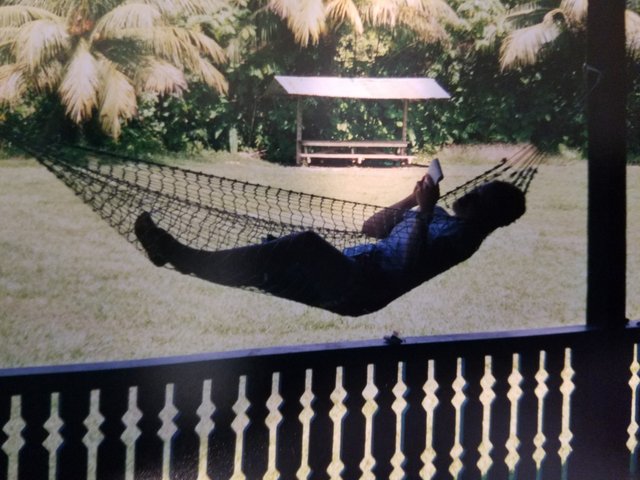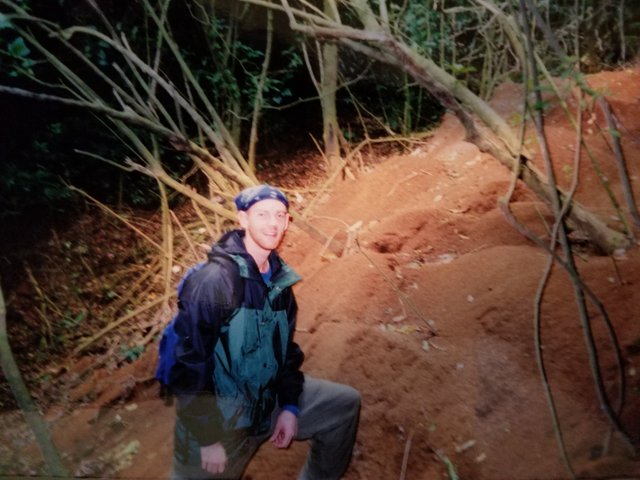Breakfast With Toucan Sam
I participated in some tropical field research a few years ago in the jungles of Costa Rica. Around 20 of us spent six weeks at 3 different locations throughout the country, carrying out various research projects we had devised prior to making our way to the tropics. Among other places, we spent two weeks at Corcovado Tropical Field Research Station, Corcovado National Park. For me this was the culmination of many years of study, and a childhood spent dreaming about the wildlife of the tropical rain-forest, a herpetologists paradise, with more reptile and amphibian species than any other ecosystem on the planet. And lets face it, if you have never shared your mess hall with a colony of bats, your showers with spiders and frogs, and your sleeping bag with cockroaches, well let me tell you, you haven't lived.
The Journey
Although this may have changed since my visit, there were only two ways into the research station; by small aircraft or hiking through the park. The station itself sat about a half kilometer from the Pacific Ocean, and the landing strip, which was carved from the jungle, literally led right to the beach. Since it was a university related trip and we were on a fairly tight budget, we came into the station on foot, and left via the small prop plane that seated six plus the pilot. Corcovado is relatively remote and uninhabited, and we started from a small village about 5 hours from the capitol of San Jose. After spending the night in a mosquito invested hotel, whose blood-filled remains dotted the walls of our room, it was an early morning tractor ride through marshes and shallow streams crisscrossed with the wakes of near invisible Jesus Christ Lizards. The final leg was a 20 km hike through dense jungle over relatively flat terrain, interrupted by the occasional stream crossing, snake encounters, and monkeys flinging poop and tossing branches. The weather was insanely humid and hot, and we were there during the dry season which meant it only rained for half an hour or so every day. At night it was so humid that it was hard to tell whether it was rivulets of sweat running down your legs, or just the cockroaches inside your mosquito netting.
Endor
The entire complex was designed something like an Ewok village a meter or so off of the ground. Ropes, canvas, and mesh tents wrapped around and intermingled with wooden structures of every kind. Aside from the sleeping quarters, and the mess hall, it was like living on a giant shaded porch with hammocks suspended from every corner. Apart from not being built in the trees, it felt like living on Endor being surrounded by the forest. The structure was designed to mitigate disturbance to the local rain-forest ecosystem and the landing strip was the only real sign of development for obvious reasons. This type of design also made it very easy for animal visitors both welcome and unwelcome to make their ways into the compound. Spiders, monkeys, insects of every kind, frogs, snakes, bats, and birds were frequent guests.
 Shower visitor (black & white)
Shower visitor (black & white)
Sam
Among the more frequent visitors, was a Chestnut-Mandibled Toucan (Ramphastos ambiguus swainsoni) named Sam (of course) that spent nearly everyday in and around the facility. Every morning as the sun started coming over the horizon, the resident troop of howler monkeys would begin their morning chorus, and Sam would make his rounds through the network of buildings. Between the two of them, if you slept much past 5:30 am, it was because you had been drinking smuggled booze the night before. Sam had absolutely zero fear of humans and would fly right over looking for handouts of every stripe, and the bird was not picky. At one point I'm sure the station managers frowned on this interaction, as it made this exotic and expensive bird species an easy mark for the pet trade. However, given his close proximity to and interaction with the ranger station on a daily basis, it would have been difficult for any nefarious character to make off with Sam.
Can You Say Sweat-Soaked
Our days consisted of waking early for breakfast, attempting to accomplish whatever research tasks needed attention, compile any data, and meet with our supervisors for a general brief. By 10:30 am, it was all over but the sweating. The rest of our time was spent swimming, canoeing, showering multiple times, hiking, reading, and generally dreaming of more showers with maybe another swim. Hammocks and lounge chairs also occupied a great deal of our time, or rather we occupied them. Canoe trips were always eventful between the crocodiles and 7 foot sharks that cruised the many river channels that threaded through the park. At high tide, there were many places where rivers met the sea, and sharks were perfectly at home hunting in the brackish waters. It was a little disconcerting paddling along and watching a shark streak by your canoe literally 18 inches from your paddle and hand.
World Class Athletes
At this particular destination our four member team was focused on Leaf-Cutter Ants (Atta cephalotes), which happens to be a hallmark species for early robotics research due to their incredible strength, and the mechanical nature of their physiology. Leaf-cutter foragers are one of the great workhorses of the animal kingdom. The equivalent of carrying 600 pounds in your teeth, while balancing the load above your head with your neck muscles. Once this has been accomplished, you will run consecutive six minute miles for the entire span of your life, 1-2 years. This incredible feat of strength and endurance is what has made the Atta species a favorite of robotics studies. Of course, the queen can live more than 25 years, and lay millions of eggs in her lifetime, so you may get some argument from reproductive health studies as to which job requires more endurance.
Malaria Dreams
It was certainly a tropical retreat of sorts, with no real contact from the outside world except for the pilots, and the radio receiver. One afternoon, while a bunch of us lounged around on one of the porches, everything around us starting vibrating and buzzing for 15-20 seconds. We really had absolutely no idea what to make of this, and kind of blew it off to mass hallucination derived from too much heat and copious amounts of malaria drugs. Anyone ever experienced dreams derived from malaria medication? Not very pleasant. I much prefer LSD. It wasn't until after we returned to civilization that we learned there had been a massive earthquake in El Salvador and we had felt it that afternoon on the porch.
Midnight in the Jungle
It was necessary for our research group and others to make forays into the jungle at night. As a matter of course we usually did this as a group just for fun because the jungle night is teeming with life you don't generally see during the day. There was a family of tapir's that frequented the cleared edge of the runway as a nightly ritual, and by shining a high powered headlamp or spotlight into the underbrush you could reflect the eye-shine of countless amphibians, reptiles, small and large mammals, even insects and spiders. Many times we went as teams of two to conduct experiments or data collection, and there was a rare occasion when you found yourself essentially alone in the middle of the jungle at night, generally due to some sort of lecherous behavior. Nothing makes you feel quite so alive as counting ants in the middle of the night half asleep, knowing you could be throttled at any second by some large predatory animal, or better yet, torn to shreds by a herd of white-lipped peccaries (wild boars). At least you could hear the boars coming.
Sea of Green
I took the first plane out the morning we left. We took off over the ocean and banking gracefully across the canopy of old growth rain-forest, took a last long look at the ranger station before heading towards the continental divide. We flew continuously for 2 hours over unbroken forest, which for me was surprising, knowing the state of disarray which make up the worlds rain-forest ecosystems. Although Costa Rica is small, they have set aside huge swaths of protected lands, primarily for ecotourism. The government of Costa Rica is smart enough to understand that the country banks on the ecotourism industry, and it would be silly to undermine their biggest cash cow. For me, being somewhat pessimistic at the time regarding the state of the environment, it was a reminder that there were/are still vast tracts of jungle and wilderness, that would simply boggle the mind to behold firsthand.
Disclaimer: All photos originally taken with 35mm camera. Digital images are photos of original 5"x7" prints. I apologize for the quality of some images. Some are black and white.





